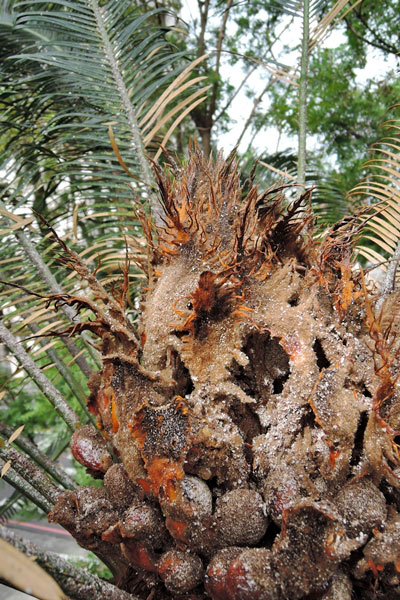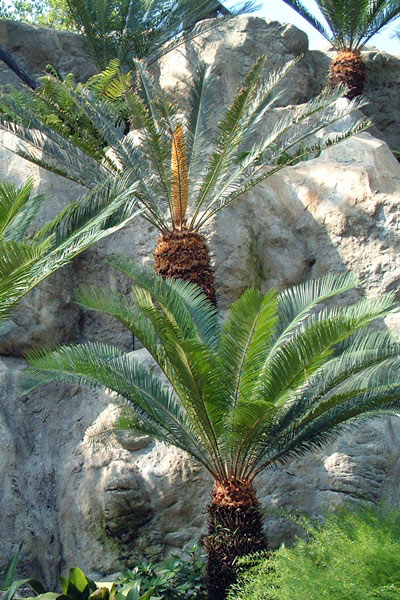Cycas revoluta
The native cycads of Taiwan have a complicated history. The cycad from Taiwan was once called “Taiwan cycad” by people all over the world because a specimen collected from Guangdong in China was mistakenly thought to have been collected in Taiwan, and it was used by scholars as the basis for the publication of a new species. It was not until someone realized that the characteristics of the cycads along the coasts of Guangdong and Fujian were exactly the same as this specimen, but they were very different in appearance from the native cycads of Taiwan. Later, in order to differentiate the native species of cycads in Taiwan, it was named “Taitung cycad” after its native distribution area. However, recent research using molecular biotechnology has revealed that the so-called “Taitung cycad” is the same species as the “cycad” that is native to the Ryukyus and widely cultivated in Taiwan. As Taiwan is an island separated from the surrounding areas by the ocean, there is a natural geographical isolation, and as life on earth continues to evolve, it is possible that one day the native cycad population in Taiwan might really evolve into a new species endemic to Taiwan.
The museum has planted the native cycads in the artificial rocky mountain of the Taitung Cycads Area next to the Tropical Rain Forest Greenhouse in the Botanical Garden and in the outdoor dinosaur garden of the Life Science Hall. The rocky mountain of the Botanical Garden is designed to simulate the natural environment of the plants in Taiwan. As the only native population in Taiwan, most of them are found in the mountain area of Hongye Village and Coast Mountains of Taitung, and most of them grow on cliffs with good drainage and sunshine, and prefer a warm environment.
The differences between the native cycads of Taiwan and plants from other origins commonly cultivated in Taiwan are as follows: the edges of the leaflets of the native species do not have the distinctive curling as those from other origins; the underside of the leaves do not have trichomes; the pinnately compound leaves are longer; the leaflets are often twisted in an irregular manner; and the angles of the leaflets are around 180∘ while other cycads are 90∘. The museum has transplanted the cycads originally in front of the Space Theater to the Taitung Cycads Area of the Botanical Garden for the purpose of comparing the two species.

